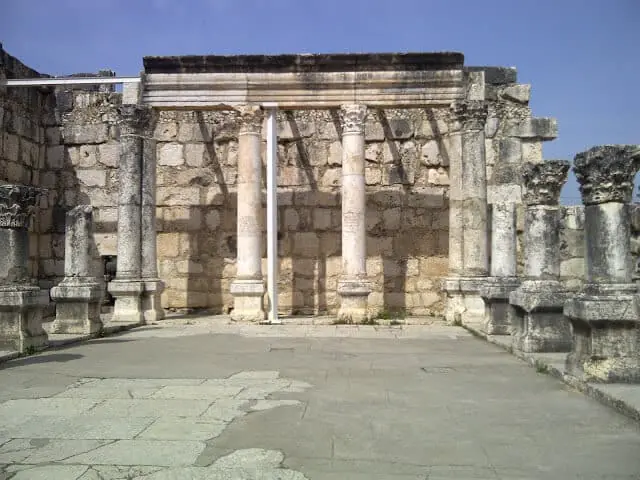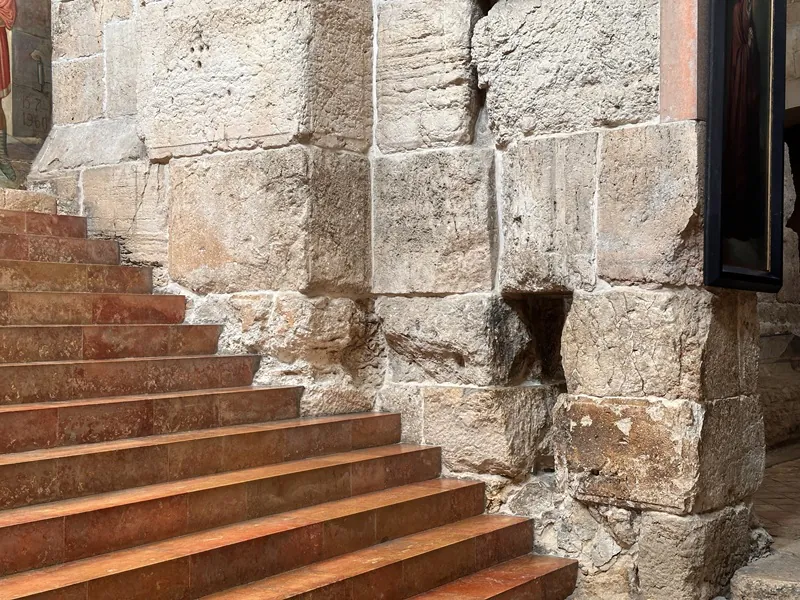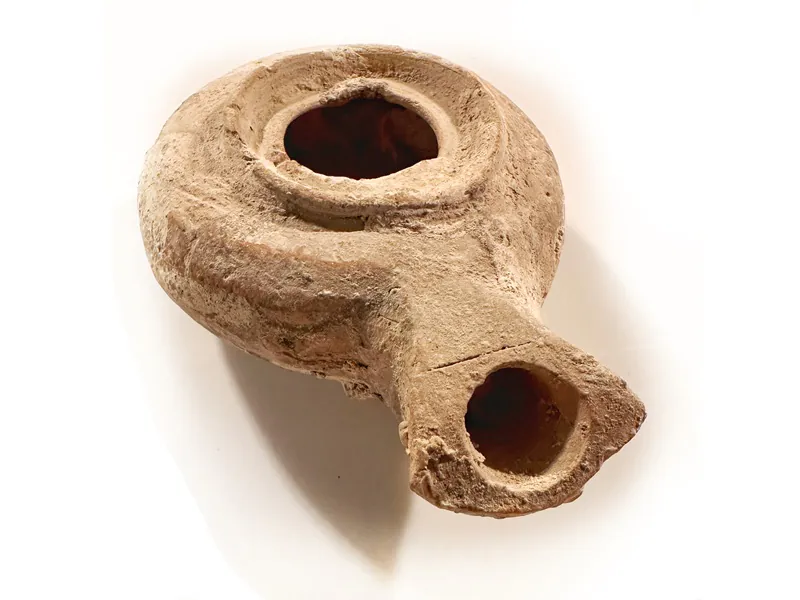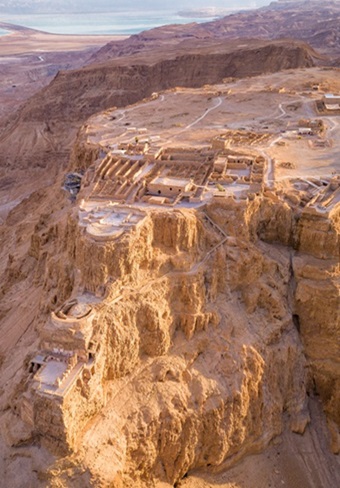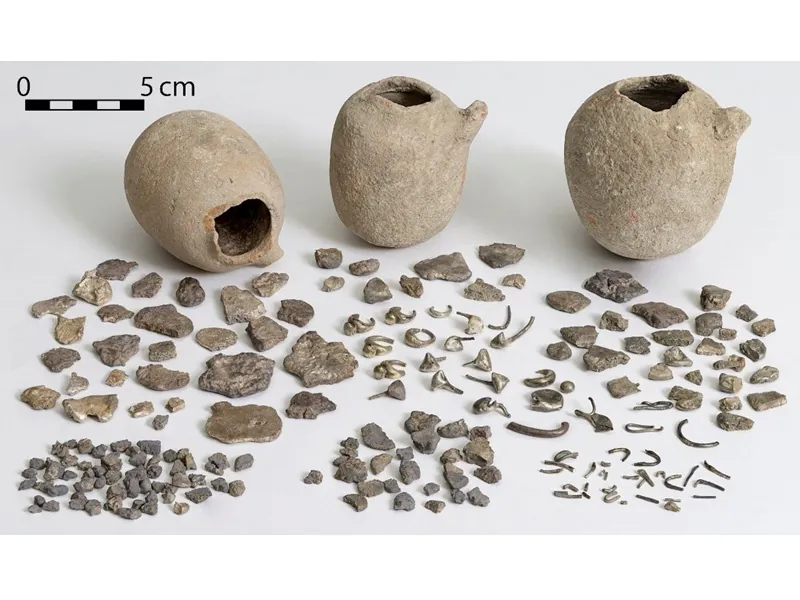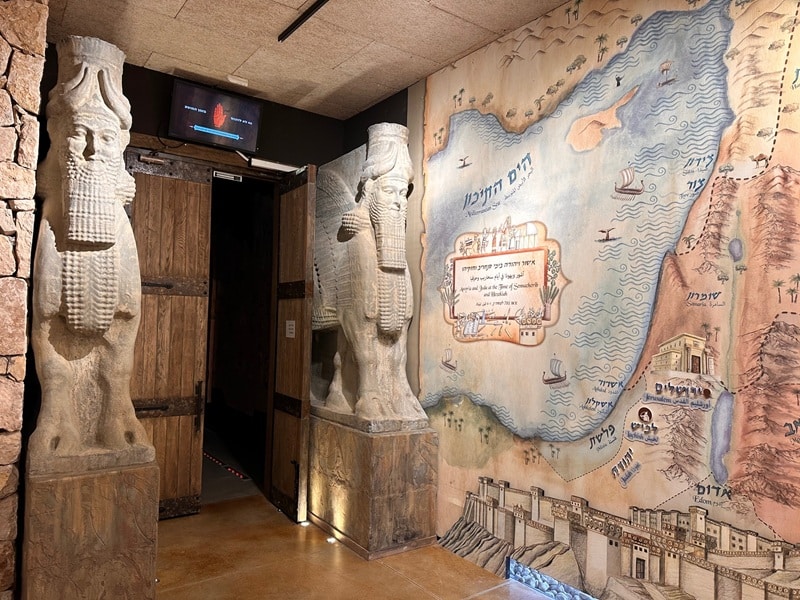Where was Pilate’s praetorium? (Guest Post)
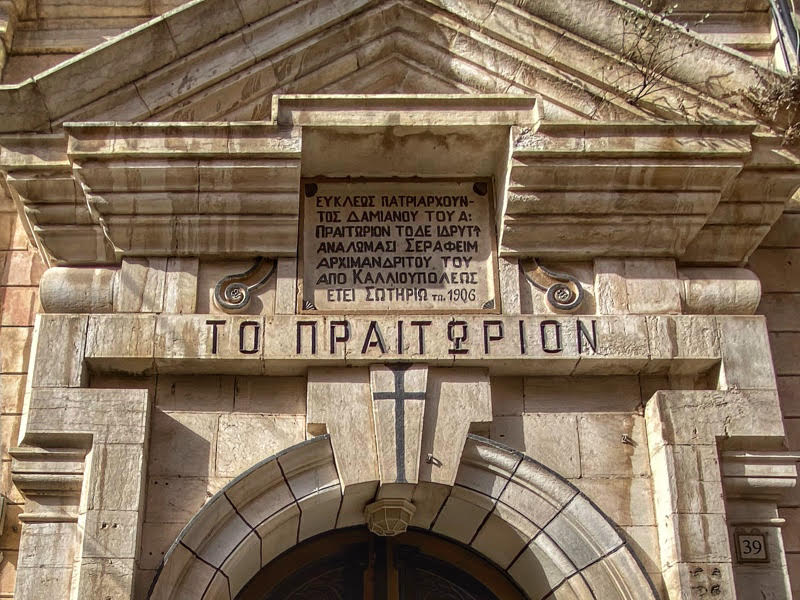
In the Christian tradition, there were at least several places that were considered as praetorium at different times. The most important of them include: the Hasmonean palace, the palace of Herod the Great and the Antonia fortress.
1. Hasmonean Palace
In the Byzantine period (4th-7th centuries), Christians pointed to the Hasmonean palace as the place where Pilate judged Jesus. In the notes of a pilgrim from Bordeaux we read: “We are leaving Zion towards the Neapolis Gate (Damascus Gate), in the lower right corner in the valley there is a wall on which Pilate’s house or praetorium (domus fuit sive Praetorium) once stood; there the Lord was questioned before his passion. However, on the left side there is the hill of Golgotha, where our Lord was crucified” (Pilgrim of Bordeaux, 333 AD). The wall the pilgrim refers to is the famous Western Wall. Cyril of Jerusalem (ca. 350 AD) also believed that the praetorium should be found nearby the Western Wall. In fact, the Hasmonean palace was located near the Western Wall, and the valley he mentions is the Tyropaeon Valley, which runs along the wall. Today this valley is invisible because it has been filled in. During the Byzantine period, the Hagia Sophia church was built on the site of the Hasmonean palace. Unfortunately, so far neither the remains of the mentioned church nor the palace have been found.
2. Herod’s Palace
Philo of Alexandria (died 40 AD) calls the palace of Herod the Great “the dwelling of the procurators.” When the procurators/prefects who normally resided in Caesarea Maritima came to Jerusalem, their “home” was the palace of Herod the Great. Josephus (1st century AD) expressed a similar opinion. Moreover, Josephus mentions that the procurator Florus (64-66 AD) sat on a tribunal located in this palace: “Florus rode to the king’s palace, and the next day he ordered a tribunal (βῆμα) to be placed in front of the building and took his seat; the high priests, nobles and most distinguished citizens then appeared before the tribunal… many of the peaceful citizens were arrested and brought before Florus, who first had them whipped and then crucified. The total number of victims that day, including women and children […] was approximately three thousand six hundred” (Josephus, The Jewish War, II, 14, 6-9).
It should be emphasized that in the Gospel of Mark it is written: “The soldiers took Him into the palace (τῆς αὐλῆς), i.e. the praetorium, and called together the entire cohort” (Mark 15:6). The word αὐλή generally has two meanings: “royal palace” and “courtyard”. In Josephus’ writings this word is always used to designate the palace of Herod the Great.
It would seem that the matter is settled. Nothing similar! The difficulty of this location as a praetorium is the fact that no early Christian tradition indicates this place as the place of Jesus’ judgment. The palace of Herod the Great as the praetorium and place of judgment of Jesus is a proposal of modern researchers.
3. Antonia Fortress
“So when Pilate heard these words, he took Jesus outside and sat down on the judgment seat, in a place called Lithostrotos (Λιθόστρωτος “stone floor”), in Hebrew Gabbata (Γαββαθα “hill”)”. (John 19:13)
 Archaeologists found a place called Lithostrotos. It is located on the premises of the Church of the Blessed Virgin Mary – the Sisters of Zion, although a small fragment of this floor is also visible in the Church of Condemnation in the area of the Flagellation Monastery (Flagellazione) belonging to the Franciscans. The floor there, however, does not come from the 1st century. As far as we know emperor Hadrian, who rebuilt the place in the 2nd century, turning it into a triumphal forum. This happened after the failed Jewish uprising – Bar Kokhba (132-135 AD). Therefore, the arch in the street popularly known as Ecce Homo is not the place from which Pilate was to show Jesus to the people, uttering the famous words: “Behold, the man” (Latin: Ecce homo) (John 19:5). The forum stones, however, certainly come from the Antonia fortress, which was destroyed in 70 AD. However, even if the floor dates back to the 2nd century, the stones of the discovered Lithostrotos floor could have been silent witnesses of Jesus’ trial. Some researchers express doubts about the presented opinion by the fact that Christians have considered this place as Pilate’s praetorium only since the end of the Crusaders time (12th century). However, we must remember that Jesus’ judgment took place during the Jewish Passover, which was one of the pilgrimage holidays (regalim). Every Jew was obliged to appear “before the Lord” in the temple in Jerusalem on three feasts: Passover, Pentecost and the Feast of Tabernacles. Undoubtedly, Josephus exaggerates when he writes that millions of Jews came to celebrate these holidays. But even if we divide this number and assume that “only” thousands came, it was a dangerous time for the Romans who occupied this place. Therefore, it seems most logical that during the Passover Pilate was in the Antonia Fortress, which was the safest place in Jerusalem. Therefore, it is not so much tradition but rather the logic of the event that causes Christians today to point to the area of the Antonia fortress as the praetorium – the place of Jesus’ judgment. Let us add that it was not a small fortress. Even though we do not know its exact size, it must have been a large building, since, according to Flavius, there was a cohort there, i.e. about 480 soldiers (6 centuries [1 century = 80 soldiers]).
Archaeologists found a place called Lithostrotos. It is located on the premises of the Church of the Blessed Virgin Mary – the Sisters of Zion, although a small fragment of this floor is also visible in the Church of Condemnation in the area of the Flagellation Monastery (Flagellazione) belonging to the Franciscans. The floor there, however, does not come from the 1st century. As far as we know emperor Hadrian, who rebuilt the place in the 2nd century, turning it into a triumphal forum. This happened after the failed Jewish uprising – Bar Kokhba (132-135 AD). Therefore, the arch in the street popularly known as Ecce Homo is not the place from which Pilate was to show Jesus to the people, uttering the famous words: “Behold, the man” (Latin: Ecce homo) (John 19:5). The forum stones, however, certainly come from the Antonia fortress, which was destroyed in 70 AD. However, even if the floor dates back to the 2nd century, the stones of the discovered Lithostrotos floor could have been silent witnesses of Jesus’ trial. Some researchers express doubts about the presented opinion by the fact that Christians have considered this place as Pilate’s praetorium only since the end of the Crusaders time (12th century). However, we must remember that Jesus’ judgment took place during the Jewish Passover, which was one of the pilgrimage holidays (regalim). Every Jew was obliged to appear “before the Lord” in the temple in Jerusalem on three feasts: Passover, Pentecost and the Feast of Tabernacles. Undoubtedly, Josephus exaggerates when he writes that millions of Jews came to celebrate these holidays. But even if we divide this number and assume that “only” thousands came, it was a dangerous time for the Romans who occupied this place. Therefore, it seems most logical that during the Passover Pilate was in the Antonia Fortress, which was the safest place in Jerusalem. Therefore, it is not so much tradition but rather the logic of the event that causes Christians today to point to the area of the Antonia fortress as the praetorium – the place of Jesus’ judgment. Let us add that it was not a small fortress. Even though we do not know its exact size, it must have been a large building, since, according to Flavius, there was a cohort there, i.e. about 480 soldiers (6 centuries [1 century = 80 soldiers]).
Concluding Thoughts
It must be added, that in certain periods, Christian tradition also pointed to the temple square as the place where Jesus was judged (first half of the 12th century). In the Middle Ages, there was a Templar monastery, and inside was the throne of Jesus, commemorating the Gospel event of Jesus’ judgment by Pilate. Another place considered as a praetorium was the Christian Mount Zion (8th-12th centuries). Pilgrims from the Byzantine period wrote about a column to which Jesus was tied and whipped. The first to mention this column is a pilgrim from Bordeaux (333), and Egeria, who in her Itinerarium in 383 AD, referring to the Good Friday service in Jerusalem, wrote: “The sun has not yet risen; after being sent away, everyone rushes to Zion (Christian) to pray at the flagellation column”.
In conclusion, we must honestly say that we are not 100% sure where Jesus was judged. The most logical place seems to be the Antonia Fortress. But even if it turned out otherwise, let us remember that the Way of the Cross always ends in a place about which we have no doubts. Calvary and Tomb of Jesus are places that have been marked since the 2nd century AD as the place of Jesus’ crucifixion, burial and resurrection.
(Post guest, written by dr. Jakub Waszkowiak, Poland)
Contact us for a private Christian themed tour of Jerusalem that will include the sites mentioned in this post.
